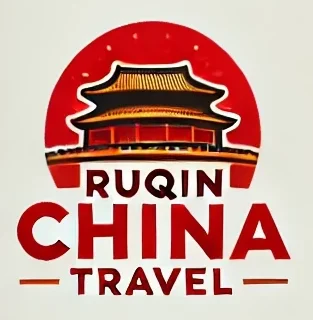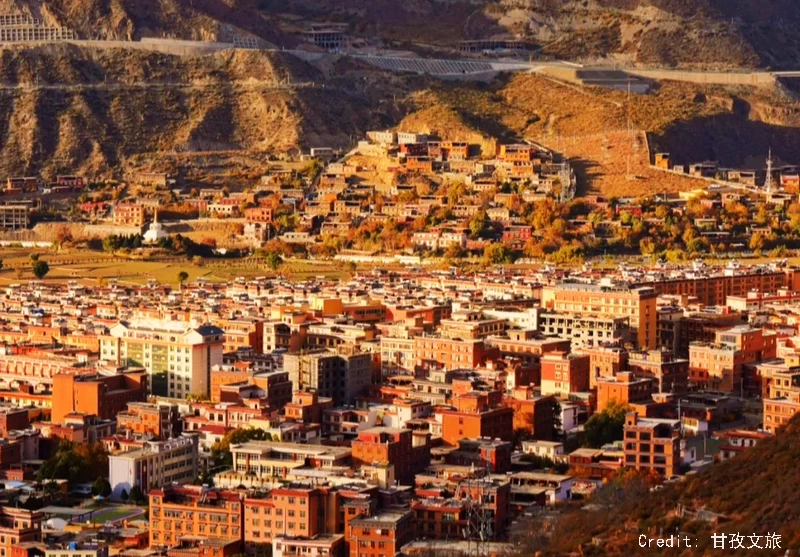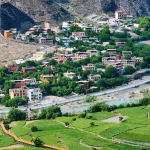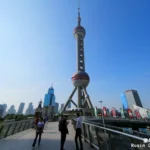Welcome to Batang County (巴塘) — the “Jiangnan of the Plateau”!
Tucked away in western Sichuan at 2,580 meters above sea level, Batang is a peaceful Tibetan town known for its surprisingly mild climate, dramatic mountain scenery, and deep-rooted culture. It’s often described as a gentle stop along the epic Sichuan–Tibet Highway, and for good reason—it invites you to slow down and take it all in.
For international travelers seeking something more authentic and less traveled, Batang is a perfect gateway to the mystical landscapes of the Kham Tibetan region. This guide is crafted especially for first-time visitors. You’ll find everything you need—how to get here, where to stay, what to eat, and how to respectfully engage with local culture.
Let’s get you ready to explore one of western China’s best-kept secrets.
1. Overview of Batang & Pre-Trip Preparation
Batang County sits at the western edge of Sichuan’s Garzê Tibetan Autonomous Prefecture (四川省甘孜藏族自治州辖县). It’s known as the “Jiangnan of the Plateau” and “Land of Tibetan Dance”. As a crossroads where Sichuan, Yunnan, and Tibet meet, Batang has long been a cultural and logistical hub. With an average altitude of 2,580 meters and a year-round temperature around 12°C, it feels both refreshing and calm. Over 90% of the county is forested, giving the air a crisp, natural scent—no wonder locals call it a “natural oxygen bar.”

For first-time visitors, Batang offers the perfect mix of natural beauty and authentic Kham Tibetan culture. It’s a gentle, accessible way to start your Tibetan Plateau journey.
When to Visit Batang County:
The best time to visit is between May and October. From June to August, wildflowers bloom and the weather stays mild. In September and October, golden autumn colors paint the landscape under deep blue skies. However, winter (November to April) brings snow and thinner crowds. Some areas may be closed, and the risk of altitude sickness rises.
So, for ideal conditions, aim for late spring to early fall. You’ll experience vibrant landscapes, open roads, and a welcoming atmosphere.
Documents & Permits You’ll Need
All foreign travelers must carry a valid passport and Chinese visa. If you plan to visit areas near the Tibet border, check in advance—you might need an extra permit. Inside Batang and at major scenic spots, hotels usually handle your registration. Even so, it’s smart to keep a photocopy of your passport with you in case of spot checks.
How to Prepare for High Altitude
Getting used to the altitude is key. On your first day, take it slow. Let your body rest and adjust for 1–2 days.
A few tips to avoid altitude sickness:
- Drink plenty of water and eat light meals.
- Avoid alcohol and strenuous activity at first.
- Start taking Rhodiola or altitude meds a week before your trip.
- Carry a portable oxygen canister—you can buy one in local pharmacies.
Following these simple steps can make your journey safer and more enjoyable.
What to Pack: Your Essential Checklist
The weather can change fast in Batang. Even in summer, nights get chilly.
Clothing:
- A warm jacket (yes, even in July)
- Windproof outerwear, hat, sunglasses
- Sturdy hiking shoes
Skincare & Health:
- SPF 50+ sunscreen, lip balm, moisturizer
- Cold medicine, stomach remedies, basic first aid
- Any prescription meds you use
Other Essentials:
- Power bank (some areas have no outlets)
- Reusable water bottle or thermos
- Camera and a bit of cash (some areas don’t accept cards)
Cultural Sensitivity Tips
Respect local customs—Tibetan culture is deeply spiritual.
Do:
- Walk clockwise around prayer wheels.
- Speak softly in temples and remove your hat.
- Ask before taking photos of people.
Don’t:
- Step on prayer flags or Mani stones.
- Discuss sensitive political or religious topics.
- Enter temples while wearing revealing clothes or speaking loudly.
Being polite and curious goes a long way in Batang. Locals appreciate friendly travelers who respect their traditions.
Language Tips for Travelers
Locals mostly speak Tibetan and a Sichuan dialect. In towns and tourist spots, some younger people speak Mandarin. English is rare, so be prepared.
What helps:
- Download a good translation app
- Carry a phrase card with basic Chinese words like:
- “谢谢” (xièxie) – Thank you
- “多少钱?” (duōshǎo qián?) – How much?
- “卫生间在哪里?” (cèsuǒ zài nǎlǐ?) – Where is the restroom?
Making a little effort with the language shows respect—and can often earn you a smile or helpful hand.
2. How to Get to Batang
Batang County may lie deep in the western Sichuan highlands, but getting there is easier than you think. Thanks to improved transport networks, international travelers now have several options—by air, rail, or road. Choose based on your time, budget, and comfort level.

By Air: Fastest Route
Flying is the quickest way. The closest airport is Kangding Airport (KGT), about 300 km from Batang. You can fly there from Chengdu or Chongqing.
Once you land in Kangding, you have three main choices:
- Private Car: Takes around 6 hours. Costs between ¥800–¥1,200. Best for small groups (3–4 people).
- Long-Distance Bus: Leaves from Kangding Bus Station 1–2 times daily. The ride takes 7–8 hours and costs around ¥150.
- Shared Ride: Sometimes hostels or local drivers offer shared vans. Ask around in Kangding town.
By Train: Scenic and Budget-Friendly
You can also take a train from Chengdu to Litang Station. From Litang, it’s a 4-hour drive to Batang.
- Bus from Litang: 2–3 buses daily. Fare: around ¥60.
- Carpool: Around ¥100 per person.
- Private Car: More flexible but pricier (¥400–¥600 total).
The route offers fantastic views, especially as you climb higher into the Tibetan Plateau.
By Road: For Adventurous Travelers
From Chengdu:
- Self-Drive: Drive west along the famous G318 Sichuan–Tibet Highway via Ya’an, Kangding, and Litang. The journey is about 750 km and takes 12–14 hours. Split it over two days for a safer and more enjoyable ride. Spend the night in Xinduqiao or Litang.
- Bus: One daily bus leaves from Chengdu Xinnanmen Bus Station (about 18 hours). Tea Dianzi Station also has occasional buses. Ticket: approx. ¥280.
From Yunnan:
Travelers coming from Shangri-La can reach Batang via Deqin and Benzilan. The journey is stunning but challenging—ideal for experienced overlanders.
Getting Around in Batang
Once in Batang, you’ll find a few simple ways to get around town and explore nearby sights:
In Town:
- Taxi: Short trips cost ¥10–¥20. No meters—agree on the price before you ride.
- Tuk-tuks: Great for short distances. Usually ¥5–¥10.
- Walking: The town center is compact and pedestrian-friendly.
To Nearby Attractions:
- Private Car: Most flexible. Expect to pay ¥500–¥800/day for a 4-seater. Great for trips to Cuopu Valley 措普沟, Sister Lakes 姊妹湖 , and more.
- Carpool: Check at the bus station or your hostel to share rides and split costs.
- Scenic Shuttle Buses: Places like Cuopu Valley offer shuttle services for about ¥90 per person.
Tips for Self-Driving Travelers
Batang is one of the few places along G318 where foreigners can drive into scenic areas like Cuopu Valley.
- Bring a valid international driver’s license and a translated Chinese copy.
- Some roads are narrow and winding. Only experienced high-altitude drivers should attempt.
- Fuel stations are few—fill up whenever you can.
Helpful Travel Apps
- Maps: Use Amap (Gaode) or Baidu Maps. Download offline maps in advance.
- Ride-Hailing: DiDi Chuxing works in some towns but needs a Chinese phone number.
- Bus Schedules: Try Sichuan Bus Ticket Website or ask your hotel staff for help.
No matter how you arrive, the journey itself is a major part of the experience. Snowy peaks, rolling grasslands, and scattered Tibetan villages make the road to Batang one of the most breathtaking in China. Take your time, make stops, and enjoy every mile of this unforgettable drive.
3. Where to Stay in Batang
Batang County offers a range of accommodations, from cozy hostels to comfortable hotels. Whether you’re on a budget or looking for more comfort, you’ll find a place that suits your needs. Here are some great options for international visitors:
Staying in the Town Center
海友酒店(Haiyou Hotel– Ganzi Batang Branch)
📍 261 Taoyuan Road, 1.5 km from the bus station
This simple, modern hotel belongs to the Huazhu chain. Rooms include free Wi-Fi, 50-inch TVs, and dry/wet split bathrooms.
✔ Highlights: Free laundry, parking, some rooms with snow mountain views.
💰 Price: ¥200–¥300 per night.
✅ Best for: Travelers who prefer clean, standardized service.
汉庭酒店(Hanting Hotel – Ganzi Batang Branch)
📍 Taoyuan Road 261, beside G318
Designed with a light industrial style, this hotel features down bedding and strong soundproofing. It also has a self-service laundry room.
✔ Bonus: At 2,580 meters, the altitude is relatively low—great for acclimatizing.
💰 Price: ¥250–¥350 per night.
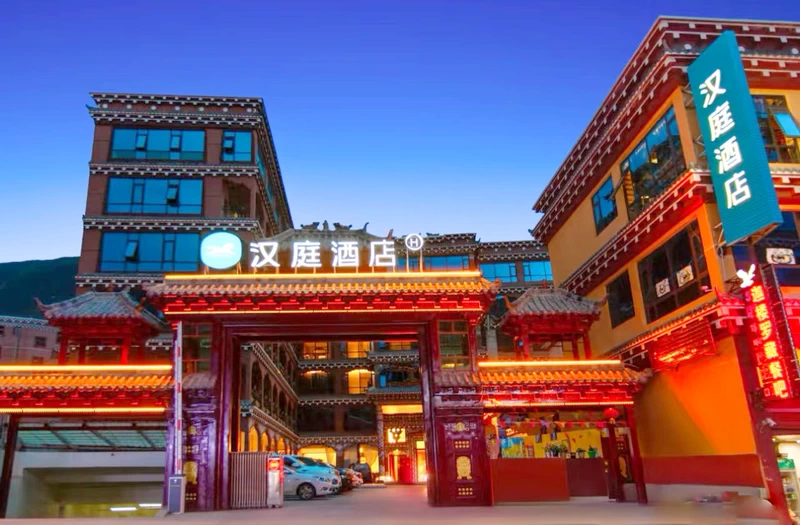
西行驿站(Westbound Inn)
📍 About 3 km from town center, on G318
This Tibetan-Han guesthouse offers a courtyard setting and authentic charm.
✔ Perks: The owner often organizes carpool trips and local Tibetan home visits.
💰 Price: ¥150–¥200 (dorm bed), ¥300–¥400 (private room).
Staying Near Cuopu Valley (措普沟)
措普岭卡庄园酒店(Cuopu Linka Manor Hotel)
📍 200 meters from Cuopu Valley Visitor Center
This is the best hotel within the scenic area. It has a Tibetan-style design and a peaceful vibe.
✔ Advantage: You can explore the valley early, avoiding long morning drives.
💰 Price: ¥400–¥600 per night.
措普沟大酒店(Cuopu Valley Grand Hotel)
📍 Just 100 meters from the visitor center
Rooms are clean, and hot water is stable.
✘ Downside: Facilities are basic, and soundproofing isn’t great.
💰 Price: ¥300–¥450 per night.
查青卡温泉酒店(Zhaqingka Hot Spring Hotel)
📍 20 km from the visitor center
Each room comes with a private hot spring pool.
🌟 Experience: Soak in warm water under a starlit sky.
💰 Price: ¥500–¥800 per night. Book early—rooms are limited!
For a Unique Camping Experience
Looking for something different? Try high-altitude camping near Batang.
措拉坪草原露营(Cuolaping Grassland Camping)
🌄 Set on vast grasslands, this site offers clear night skies and local-style tents.
🕓 Best season: June to September.
⚠ Tip: There’s no electricity, and night temps can drop below 0°C. Bring a professional sleeping bag.
德然梅朵营地(Deran Meiduo Camp)
📍 15 km from Batang town
The team provides tents and food.
🎉 Activities: Bonfires, Tibetan dance and music.
💰 Price: ¥200–¥300 per person (tent included).
Booking Tips
- Book 1–2 weeks in advance during the peak season (May–October), especially around holidays.
- Use international platforms like Ctrip or Booking.com. Some hotels may not accept foreigners, so confirm first.
- Contacting hotels directly may get you better prices. Have your passport info ready.
- Choose places with 24-hour hot water and heating—especially at higher altitudes.
No matter where you stay, Batang’s hotel staff are usually warm and helpful. Don’t hesitate to ask them for local tips or secret spots—you might discover something most travelers miss!
4. Must-See Attractions in Batang
Batang County and its surroundings are packed with some of the most stunning landscapes and rich cultural sites in western Sichuan. Here are the top highlights that international travelers shouldn’t miss:
1) Cuopu Valley National Forest Park(措普沟国家森林公园)
Often called a “miniature version of western Sichuan,” this 900-square-kilometer park blends snow mountains, forests, meadows, lakes, hot springs, and temples.

Top experiences include:
- Cuopu Lake(措普湖) – Known as “the first sacred lake of Kham.” Its turquoise color is surreal. Try the local “shouting for fish” ritual—blow a conch, and fish swim to the shore!
- Rekeng Hot Springs(热坑温泉群) – Home to over 150 steaming springs. Visit between 8–10 a.m. for misty, magical views. Don’t skip the soft-boiled eggs cooked in the spring!
- Zhangde Grassland(章德草原) – Wildflowers bloom in summer, with Mount Zakin Jiabo towering in the background. It’s postcard-perfect.
- Cuopu Monastery(措普寺) – A 700-year-old Nyingma temple. Look for rare white eared pheasants and blue sheep at sunrise or sunset.
Practical info:
- Entrance: ¥100 + ¥90 for the shuttle bus
- Hours: 8:30 a.m. – 5:30 p.m. (may extend in peak season)
- Suggested time: 5–8 hours
- Transport: 1-hour drive from Batang or a mix of van + horseback/hike
Now you can enjoy horseback hot spring tours, Tibetan costume parades, home visits, blessings from King Gesar stories, and even coffee and noodles at road-side Instagram spots.
2) Sisters Lakes Wetland Park(姊妹湖国家湿地公园)
This pair of glacier lakes looks like a pair of glasses from above. They’re among the most famous views along the G318 Highway.
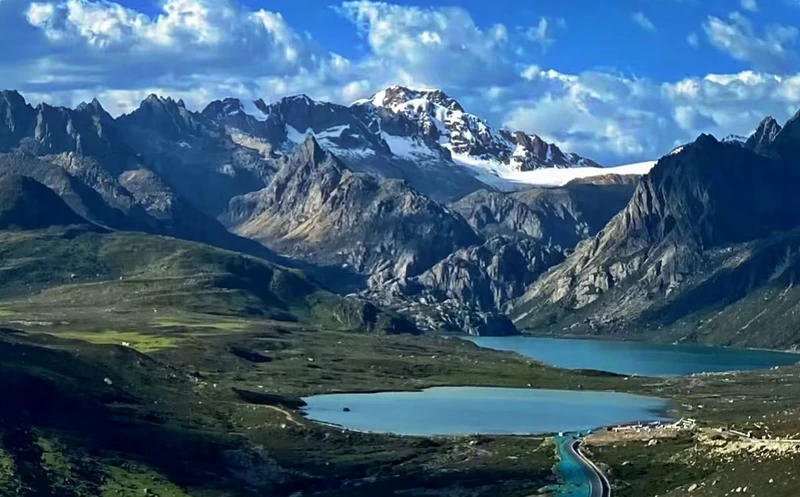
- Highlights: Largest twin alpine lakes in the region, reflecting snow peaks. Rare birds like black-necked cranes live here.
- Best viewpoint: Right by the G318 observation deck—sunrise and sunset are unforgettable.
- Tip: The altitude here is 4,500 meters. Move slowly and carry an oxygen canister.
3) Batang Old Town & The “Eight Views”(巴塘古城与八大景)
Dive into Batang’s cultural soul by exploring its historic spots:
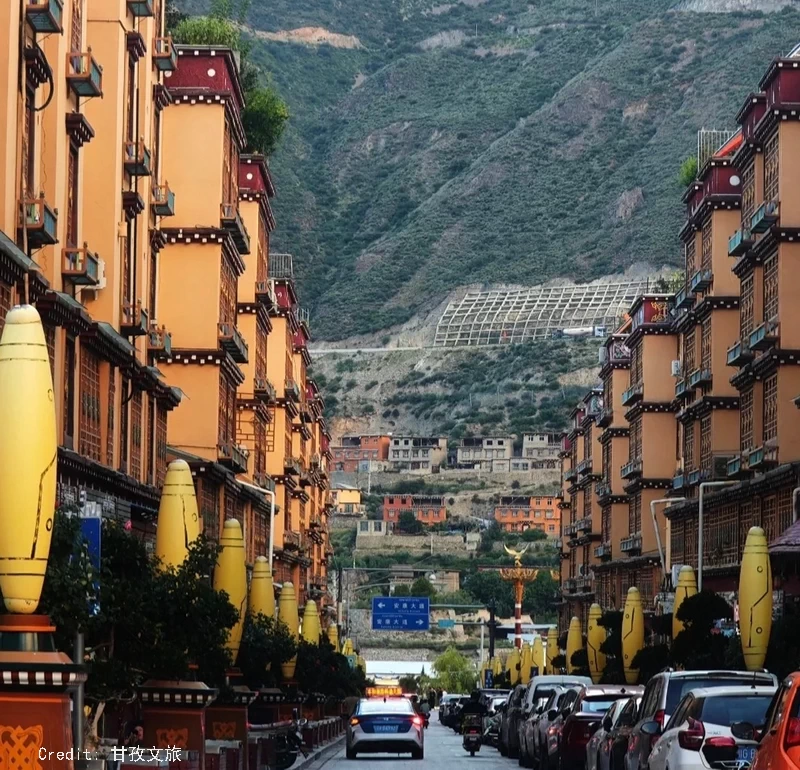
- Snow on Mount Ba(巴山积雪) – A scenic peak southeast of town. Best seen in late winter or early spring.
- Ancient Mulberry on Stone(古桑抱石) – A 1,000-year-old tree growing from a giant boulder in the northern suburbs. Locals see it as sacred.
- Taoyuan Flower Fields(桃园赏花) – In spring (March–April), the area turns into a pink sea of peach blossoms.
- Kangning Temple(康宁寺) – A peaceful Yellow Hat temple with ancient cypress trees and a strong spiritual vibe.
4) Tea-Horse Road Ruins(茶马古道遗址)
Visit Yinggezui(鹦哥嘴), a cliff pass shaped like a parrot’s beak. It was once a vital trade route linking Tibet with inland China.
- Look for: Old carvings etched into the rocks—living stories of the past.
- Try: Hiking a short section to feel the rugged spirit of the horse caravans.
5) Genyen South Route Adventure(格聂南线)
Perfect for travelers with more time and a sense of adventure, this scenic drive runs from Batang to Litang.
- Highlights: Genyen Sacred Mountain(格聂神山), Lenggu Monastery(冷古寺), and Zeba Village(则巴村).
- Tip: Plan at least 2–3 days. A 4WD vehicle is essential.
6) Trip Itineraries: What to Choose?
1-Day Trip: Focus on Cuopu Valley—start early and spend the whole day.
2-Day Trip: Day 1 at Cuopu Valley, Day 2 at Sisters Lakes + Batang Old Town.
3+ Day Trip: Add the Genyen South Route or Maoya Grassland for a deeper experience.
Whether you’re here for the culture, scenery, or adventure, Batang’s attractions offer something unforgettable for every traveler. Up next? Let’s talk about what—and where—to eat!
5. What to Eat in Batang
Batang’s food scene is a flavorful blend of spicy Sichuan flavors and rich, hearty Tibetan cuisine. While you’re exploring the mountains and temples, don’t miss the chance to enjoy a true culinary adventure. Here are the must-try dishes for foreign visitors:
Tibetan Specialties You Shouldn’t Miss
团结包子 (Unity Bun)
This giant steamed meat bun is a feast for both the eyes and the stomach. It’s about 30 centimeters wide and usually requires four people to carry the steamer.

- Filling: Tender yak meat with local matsutake mushrooms
- Texture: Fluffy and chewy dough, deeply satisfying
- Meaning: A symbol of Tibetan unity, often shared at festivals
- Where to try: Tibetan restaurants in Batang town, around ¥50–¥80 (feeds 3–4 people)
牦牛肉火锅 (Yak Meat Hot Pot)
This warming dish is perfect for chilly mountain evenings. Slices of fresh yak meat are dipped into a rich bone broth cooked in a traditional copper pot.
- Ingredients: Wild mushrooms, highland potatoes, Tibetan-style blood sausage
- Taste: The meat is tender and not gamey; the broth is deeply nourishing
- Try it at: Xueshan Yak Hotpot (雪山牦牛火锅) — ¥80–¥120 per person
Local Dairy Delights
巴塘酸奶 (Batang Yogurt)
Made from naturally fermented yak milk, this yogurt is thicker and richer than what you may be used to.
- Look for: A golden milk skin on top—that’s a sign it’s fresh
- Taste: Thick, creamy, slightly tangy—often sweetened with local honey
- Best version: Homemade by local herders; you can also find it at the market (¥15 per bowl)
酥油茶 (Butter Tea)
This traditional drink is an essential part of Tibetan hospitality. It’s designed to warm the body and fight the dry, cold air.
- How to drink: Gently blow off the oil layer, sip slowly. For a full experience, pair it with tsampa (roasted barley flour).
- Heads up: It’s salty and might surprise your taste buds. However, you can ask for a sweetened version if preferred.
Batang’s food tells the story of its land and people—hearty, communal, and full of warmth. Trying these dishes is more than a meal—it’s a cultural experience.
6. Travel Tips for Visiting Batang
Before you begin your Batang journey, keep these practical tips in mind. They’ll help you stay safe, comfortable, and respectful.
Watch out for altitude sickness.
Batang sits at an average elevation of over 2,500 meters, with some spots even higher. On arrival, avoid intense activity. First, give your body 1–2 days to adjust. Secondly, drink more water and eat smaller meals. Additionally, bring Rhodiola supplements or a portable oxygen canister just in case.
Respect Tibetan culture.
When entering temples or homes, always remove your hat. Never touch Buddha statues, scriptures, or monks’ heads. Also, always ask before taking photos—especially of people, monks, or religious events.
Prepare for weather and roads.
The weather can change fast in the mountains. Plan your routes carefully if driving or hiring a car. Check forecasts often.
Start slow with local food.
Tibetan dishes like tsampa or butter tea may take some getting used to. Try small portions first. If you have a sensitive stomach, carry your usual medicine.
Language basics help.
Mandarin works in town, but Tibetan is more common in villages. Translation apps or simple phrase cards can be very helpful.
Carry ID at all times.
Batang is near the Tibet border. Some areas have restrictions. Always keep your passport and valid Chinese visa with you, and follow local rules.
Batang may not be loud or flashy, but that’s exactly what makes it special. This peaceful Tibetan town along the Sichuan–Tibet Highway blends natural beauty with deep cultural roots. Every view calms the mind. Every interaction feels sincere.
We hope this guide helps you plan a meaningful trip to Batang. Whether you come for the landscapes or the culture, Batang welcomes you in its own quiet, unforgettable way.
Safe travels—and may your journey be full of wonder and discovery!
